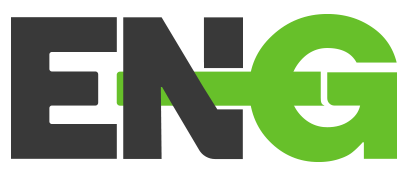Line operators and other plant staff are the front-line for your automation system. Preparing them for any changes to advanced automation design or rollouts is critical to project success. Like that time your computer upgraded windows without warning, sudden changes to operating systems, HMI’s, and controls are frustrating to plant personnel and engineers. Engineers creating advanced automation design and implementing are bound to cause issues.
Get success with your next automation rollout by thoroughly preparing your key personnel and staff in the following critical ways:
Put Your Plant Manager In-Charge of System Conversion
The plant manager who oversees the area of the plant experiencing the upgrades should lead the conversation with the integration team. These plant managers should have the best understanding of what needs are specific to their area of the plant. They also should know how their systems are intended to run, and what specific guidelines need to be followed.
The plant manager also handles shutdowns, staffing, and communication with upper management. By having one clear line of communication to the plant, the advanced automation design integration team will understand what is expected of them, and the plant staff will feel the same way. This creates buy-in at the plant level and helps startup go smoothly.
Conduct Hands-On Component Training with Your Integrator & Staff
The number one challenge facing new system rollouts is that plant staff is unsure of how to use the new components. This is understandable since they likely have not worked with the new components before, but it is important for plant staff to be active in training with the integration team. Training should not be a classroom lecture either; integrators should be more than happy to walk plant staff by using the interfaces and machines in the operating environment.
If plant staff is unsure of the new components minor issues and operator errors can turn into hours of time spent bringing the integration team back to the plant to correct mistakes and potentially costly plant shutdowns. Ask your integrator not only to demonstrate normal function, but also walk each member of the staff through basic troubleshooting methods, line changeovers, startup and shutdown procedures, and any other likely scenarios. This increases safety and rollout success.
Thoroughly Train Key Users on New Software Use in the New Advanced Automation Design
Avoid the million-dollar paper-weight syndrome where new systems are quickly abandoned because no one understands how to interface with it. Without knowing how to use the software, plant staff will often resort to “old methods” or hacky solutions that do more harm than good.
If the software is brand new to your plant, ask your integrator for information on software training. Many platforms like Rockwell and Siemens come with user support and training sessions, and your integrator can also walk you through key functions. Most importantly, make sure anyone from the plant floor to the executive offices who needs the software to do their job feels comfortable accessing and using it.
Plan the Plant Schedule Around the Rollout
During the advanced automation design phase, take the time to set the schedule for the rollout. Figure out the dates that the rollout will be occurring and how long it will take. Work with project stakeholders, plant staff, and executives to create a rollout schedule that minimizes downtime and doesn’t fall during peak production times.
Start preparing plant staff and any other departments affected by announcing the dates and any changes to production, safety practices, or routine well ahead of time with several follow-up reminders as the date approaches. On the day the project starts, it’s also not a bad idea to schedule staff safety meetings to touch base on changes and what to expect during the project execution.
By planning plant shutdowns well ahead of time, productivity can be maximized, without a loss of profit due to unplanned shutdowns. Remember, anything can happen during a rollout, so it is important to have some flexibility in the schedule to account for any curveballs that are thrown into the game.
New controls system rollouts often start before advanced automation design is complete. There is a lot of correspondence between the plant staff and the automation integrators leading up to the execution of the project. Timely communication both directions is key.
Two additional measures you can take during rollout that will help it go more smoothly are providing your integration team (both internal and external) with:
Schematic of the current system’s I/O points and wire routing
By providing a detailed schematic of the advanced automation design of the system’s physical components the systems integrator will spend less time sorting through cables and scratching their heads, and more time productively working on the upgrades. When the system integrator better understands how the system is wired originally, they will be able to make educated decisions when wiring the new system components.
Details of the Current Control System’s Logic
Even if the new system is going to be programmed exactly the same as the old system, it is important for the integrator to know how the current system was expected to run to optimize the new controls and equipment. Projects where this is provided go move faster because more time is spent during the design phase actually designing the logic instead of trying to understand the system.


